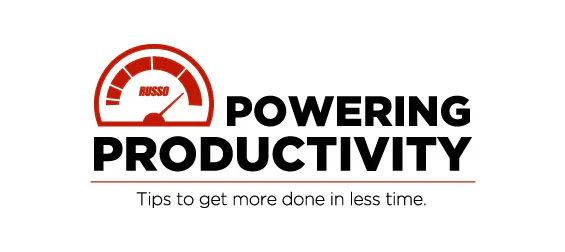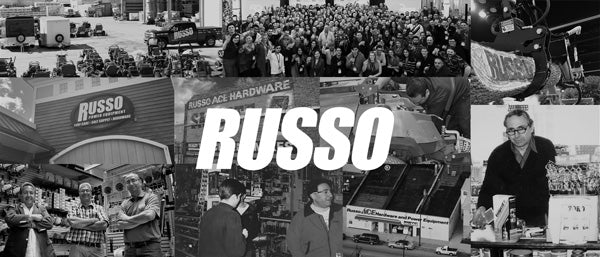Safety First! Plowing
Untrained employees are a danger to themselves and everyone they’re working next to out in the field. We outline some important tips for training newbies in your snow ops.
This a typical scenario. He pulls the truck into the parking lot, exhausted from plowing snow for the last 24 hours straight. He thinks to himself: “what have I gotten myself into?” This was his first big snow event. He had applied to an ad on Craigslist, and been hired as a snow plow driver. A crew leader gave him a quick run through on how to operate the plow and a sort of, kind of, lesson on how to plow the snow. The entire orientation lasted five minutes. He lit a Camel, took a strong pull off his 12-shot mocha, and dropped the plow to the ground.
He began pushing the snow towards the back of the lot, he knew he had to try and angle all the snow to the left hand corner, but he was tired and that seemed like it would take too long. So he pushed the snow hard to the back of the parking lot disregarding the map that was in his three ring binder, which contained the contents of his route. As he pushed the snow towards the back of the lot, he did not slow down fast enough and the plow slams into the curb. He curses. He didn't like this job anyways. He reverses quickly, and smash. Right into the side of a minivan leaving the parking lot. He curses again and gets out of the cab. He apologizes, exchanges insurance info. Meanwhile, the snow is piling up. “Forget this!” he says to himself.
Back at the shop he tells them about the accident, doesn't mention the curb and leaves. And in doing so he fails to fill out his route sheets, He had no intention of coming back. Has your business suffered from hurt employees? Has your business ever had equipment damaged by your employees? Have you ever damaged a client’s property? If so training can play a huge role in protecting, you, your clients, your employees, and your property. Here are some of the most important training tips for your snow crews.
ORIENTATION
This aspect of an employee’s training is the most important. It is crucial that this training take place before a new employee begins working for your business. You have identified, this person is a good candidate, their core values align with yours and your staff believes they will be a good fit. The orientation allows for your new employee to get the lay of the land, learn about your business and company culture. You are teaching them about the things that make your company successful. During the orientation you are re-affirming:
- Expectations
- Hours
- Customer Service
- Time off Requests
- Holidays
- Snow and blizzard expectations
- How the equipment works
- How to treat the equipment
- Expected hours during storms
- What to do encase of emergency
- Drug, Alcohol, and tobacco policies, etc.

Orientation gives you the ability to determine if this new candidate has what it takes to be a part of your business. It is recommended that this orientation phase last a minimum of two weeks. This will allow you to truly begin the necessary developmental process needed to build your team the right way.
EQUIPMENT
The equipment is a huge investment for any business, it can cost in the hundreds of thousands of dollars, depending on the size of your company. But even if you only have two trucks, having one truck down can be devastating to your snow season. Teaching new employees and refreshing seasoned employees on the equipment operations is vital to having a successful snow season. Some of the keys are:
- Working the four-wheel drive properly. When to use the four-wheel drive and when to disengage
- Attaching and removing the plow
- Operating the plow, up down, forward, back, and side to side
- How to operate the emergency light
- How to operate the mechanical spreader
- How to calibrate the spreader to ensure the appropriate amount if deicer is used
- How to clean the equipment after use
- How to properly back up and check for blind spots
- How to load snow and use the dump bed
- Small repairs that can be made on site if a break down occurs

These are just some of the keys to successful equipment that will allow your company to succeed during this winter’s worst storms
DRY RUNS
One of the best things you can do is dry runs, this best practice is very helpful to re-fresh and teach new employees how things should run during a storm. Taking equipment to a site and having them remove the plow, practice where to plow snow to, having them show you they would do in a storm and them making on site corrections goes a long way to training your employees how to properly plow snow, showing them key items such as:
- Handicapped areas
- Cart corrals
- Bus stops
- Loading docks
- Gas stations
- Oil stations
- Side walks
- Drain locations and why not to plow snow over top of them
- Employee break areas
- Employee parking
- ATM’s

Identifying these areas onsite will give your crews an understanding for why these places are so important to your clients and your business’s success during the winter season.
CHECK INS
Many brands have many different ways to check in and verify service was completed. Ensuring your employees have been trained on these is vital to your business being paid for the services they have just performed. You may have several different types of “check in’s” on each route so clearly identifying the method of reporting is key to recording service and getting paid.
- Some locations will require you to check in with a mobile app
- Some will have an IVR number to call in
- While others will have a paper work order
Making sure your team completely understands why this is important and ensuring it is done is a key to the end result which is billing and properly completing the job.

GUIDING HAND
A crucial part of the orientation should be to pair each new employee with a mentor.
Assigning a mentor to your new employee is a crucial step in the development of your new employee. This gives them someone to shadow, someone who will show them the ropes, and someone to work with during the upcoming storm.
A good mentor is an individual who has proven themselves to be a leader in your business and someone who will help build that new employee into a great member of your team.
PRE AND POST-SEASON INSPECTIONS
Training your employees to properly document pre and post season inspections is an extremely important element in a successful snow season. This helps protect your company and your clients for undeserved blame being attached to your business. Documenting each and every broken curb, speed bump, cart corral, dumpster enclosure will save you significantly after the storms. If damage is brought against your business, you will have documentation showing that the damage was on the property prior to your arrival and plowing. Do not rely on he said she said, or I know it was there already. Have the proof, train your management and staff to be extremely diligent in the pre and post season inspections, ensure you have a form that allows for a member of the locations management to sign off on the inspections that way it is validated that you and your business is in the clear for damages you did not create.
SLIP-AND-FALLS
Train your employees on the importance of ensuring that slip and falls do not occur on their routes. Explain to them why and explain the costs associated with each slip and fall. Slip and falls can be extremely costly and detrimental to a business. Ensuring lots are pre-treated with deicer, ensuring snow is not piled behind cars, ensuring sidewalks are completely cleaned and deiced, ensuring that handicapped areas are shoveled, plowed, and deiced, paying attention to bus stops and loading docks, employee parking areas, are key to avoiding costly slip and falls.
Training your employees to understand what a great job is and how they provide that great service will reduce the number of slip and falls on each route. Ensuring that site maps are followed and that your employees have been trained on exactly what the expectation of a clear lot will allow your clients and your clients customers to enter their business’s safely during this winter’s storms.
BLIZZARD MANAGEMENT
Having a specific training on blizzard management is a key to being successful. Blizzards put stress on all who are working in them. The hours are longer, the snow heavier, the danger increased. But having an exact road map laid out for your employees will prepare them for the longest worst storms Mother Nature has to offer. Blizzard management plans should include “after the storm protocol” as well. Getting all your paper work complete and the billing done correctly is just as important as plowing the snow. Including your blizzard management in a weekly snow meeting will ensure that they are ready for what is coming. New snow employees will be prepared for what will happen, and seasoned veterans can share stories of what worked and what could be done better. These blizzard training sessions will be extremely valuable to your business.
Remember, you can never prepare enough for the winter season. Spending the time, effort, and money up front will increase your profits and allow your business to grow with efficiencies that separate you from your competition. Being prepared, trained, and ready to go is the key to success in this industry.

Powering Productivity
Our blog powers your productivity through new product reviews, industry news, tips & tricks, business advice, and more!

Russo News
Stay up-to-date on the latest company news and learn more about our history.

Leave a comment